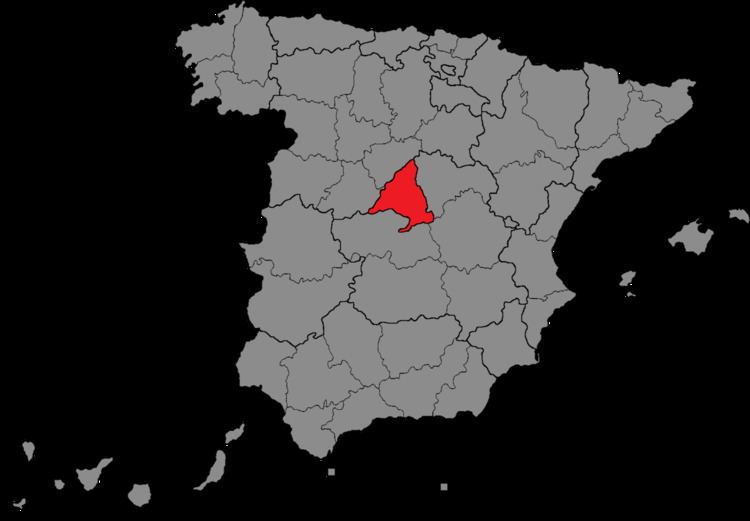Province Province of Madrid Population 6,436,996 (2016) Region Community of Madrid | Autonomous community Community of Madrid Electorate 4,927,932 (2016) | |
 | ||
Seats 32 (1977–1982)
33 (1986–1989)
34 (1993–2000)
35 (2004–2008)
36 (2011–) Created Spanish general election, 1977 Major settlements Madrid, Móstoles, Alcalá de Henares | ||
Madrid is one of the 52 electoral districts (Spanish: circunscripciones) used for the Congress of Deputies—the lower chamber of the Spanish Parliament, the Cortes Generales. The electoral system uses the D'Hondt method and a closed-list proportional representation, with a minimum threshold of 3%.
Contents
As of 2015 it is the most populated of all the 52 districts. Due to its large seat apportionment, it is one of the few districts (aside from Barcelona) where the 3% threshold is effectively applied. In most other districts, the application of the d'Hondt method introduces a de facto threshold at the constituency level. Due to this fact, third parties such as IU, UPyD and the CDS have historically found it easiest to win seats in this district even if unable to do so in most other constituencies.
The most-populated municipalities are Madrid with over 3,000,000 inhabitants, Móstoles and Alcalá de Henares with over 200,000, Fuenlabrada, Leganés, Getafe and Alcorcón with over 150,000, and Torrejón de Ardoz, Parla and Alcobendas with over 100,000.
Traditionally, candidates running for Prime Minister of parties contesting a general election nationwide have led their party's electoral list in Madrid.
Boundaries and electoral system
Under Article 68 of the Spanish constitution the boundaries must be the same as the province of Madrid and under Article 140 this can only be altered with the approval of congress. Voting is on the basis of universal suffrage in a secret ballot. The electoral system used is closed list proportional representation with seats allocated using the D'Hondt method. Only lists which poll 3% or more of all valid votes cast, including votes "en blanco" i.e. for "none of the above" can be considered for seats. Under article 12 of the constitution, the minimum voting age is 18.
Eligibility
Article 67.3 of the Spanish Constitution prohibits dual membership of the Cortes and regional assemblies, meaning that candidates must resign from Regional Assemblies if elected. Article 70 also makes active judges, magistrates, public defenders, serving military personnel, active police officers and members of constitutional and electoral tribunals ineligible.
Number of members
In the general elections of 1977, 1979 and 1982 Madrid returned 32 members. That figure was increased to 33 members for the 1986 General Election, to 34 members for the 1993 election and then to its current figure of 35 from the 2004 General Election.
Under Spanish electoral law, all provinces are entitled to a minimum of 2 seats with a remaining 248 seats apportioned according to population. These laws are laid out in detail in the 1985 electoral law. (Ley Orgánica del Régimen Electoral General) The practical effect of this law has been to overrepresent smaller provinces at the expense of larger provinces like Madrid.
In 2004 for example Spain had 34,571,831 voters giving an average of 98,777 voters per deputy. In Madrid however the number of voters per deputy was 127,377 the second largest ratio after Barcelona. In contrast the ratio was 38,714 and 26,177 respectively in the smallest provinces of Teruel and Soria.
